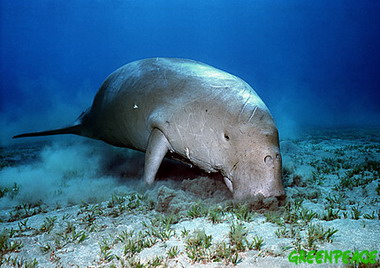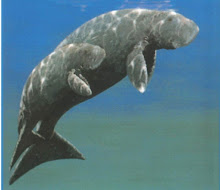Ancient Dugong Worship site found!
In Paris a worship site in the Persian Golf has been discovered and predates other worship sites by 5000 years! This sanctuary that people believe to date back between 3500 and 3200 BC, was discovered on Akab Island in the United Arab Emirates, 50km north of Dubai.
Wednesday, April 25, 2012
Tuesday, April 24, 2012
Adaptations
Dugongs have some adaptations that help them to survive:
- The upper lip is covered in bristles to help find and eat sea grass
- Their nose is at the top of their head so that they can have as much of their body in water when they come up for water
- The eyes and ears are on the side of their head so that they can see potential predators
- They have a flattened tale, to make their movements quicker and more graceful.
Risk to survival
As dugongs are very slow, calm creatures they are often the victims of boat strikes and are occasionally killed or seriously injured by the propellers. In many parts of the world people hunt them for food and in Australia they are a traditional food of Aboriginal people. Dugongs have very little protection against predators, and as said before they are sometimes attacked by sharks, crocodiles and killer whales.
Migration
During the winter, a few packs of dugongs will move to warmer waters, such as bays and canals. Others will move to man made radiators for warmth. Warmer waters also help with breeding as different packs will come together and the males will find new females.
Reproduction:
A female dugong gives birth to one calf every five years, she starts reproducing when she gets to 9 to 10 years of age. They are born in shallow waters, so that the calf can easily take its first breath. When it is born its a light brown colour is a meter in length and weighs 20kg, they feed on the mothers milk. A calf will stay with its mother for two years.Warm water is preferred for breeding.
Where they get their energy from
Dugongs are herbivores, they graze on sea grasses (aquatic plants).Their upper lip is covered in bristles, which they use to find and eat sea grass with. They are pretty high in the food chain as they are rarely attacked, they are sometimes attacked by crocodiles, killer whales and sharks, but its rare.
Marine environment that they are found in
Dugongs are mostly found in the warm waters surrounding Indonesia and Australia. They are found widely throughout the Indo-Pacific tropics but the highest population of them is concentrated around Northern Australia. Dugongs are strictly a marine animal.
Subscribe to:
Posts (Atom)



